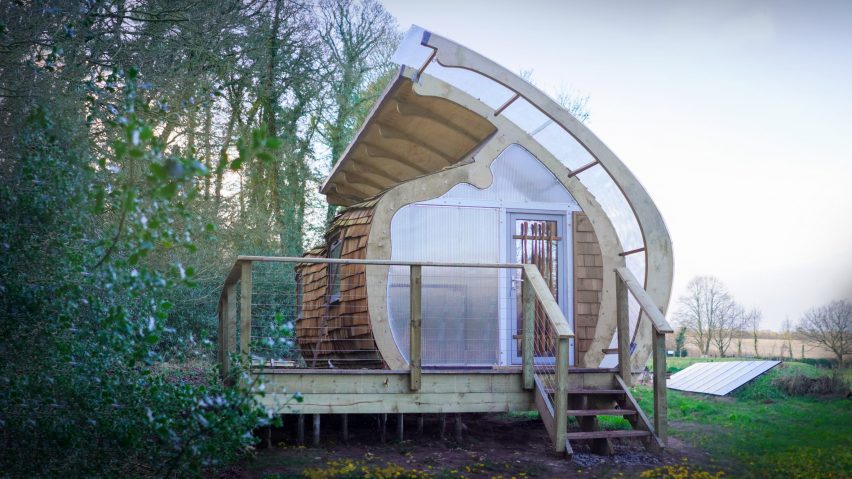
Peter Markos models timber Monocoque Cabin on world war two fighter plane
Architect Peter Markos has designed the Monocoque Cabin, an off-grid timber cabin defined by an organic, cocoon-like form, on a farm in Shropshire, UK.
Nestled beside the surrounding woodland, the cabin is wrapped by an external skin or 'monocoque' – similar to an eggshell – that draws on structural systems used within the aerospace and automotive industries.
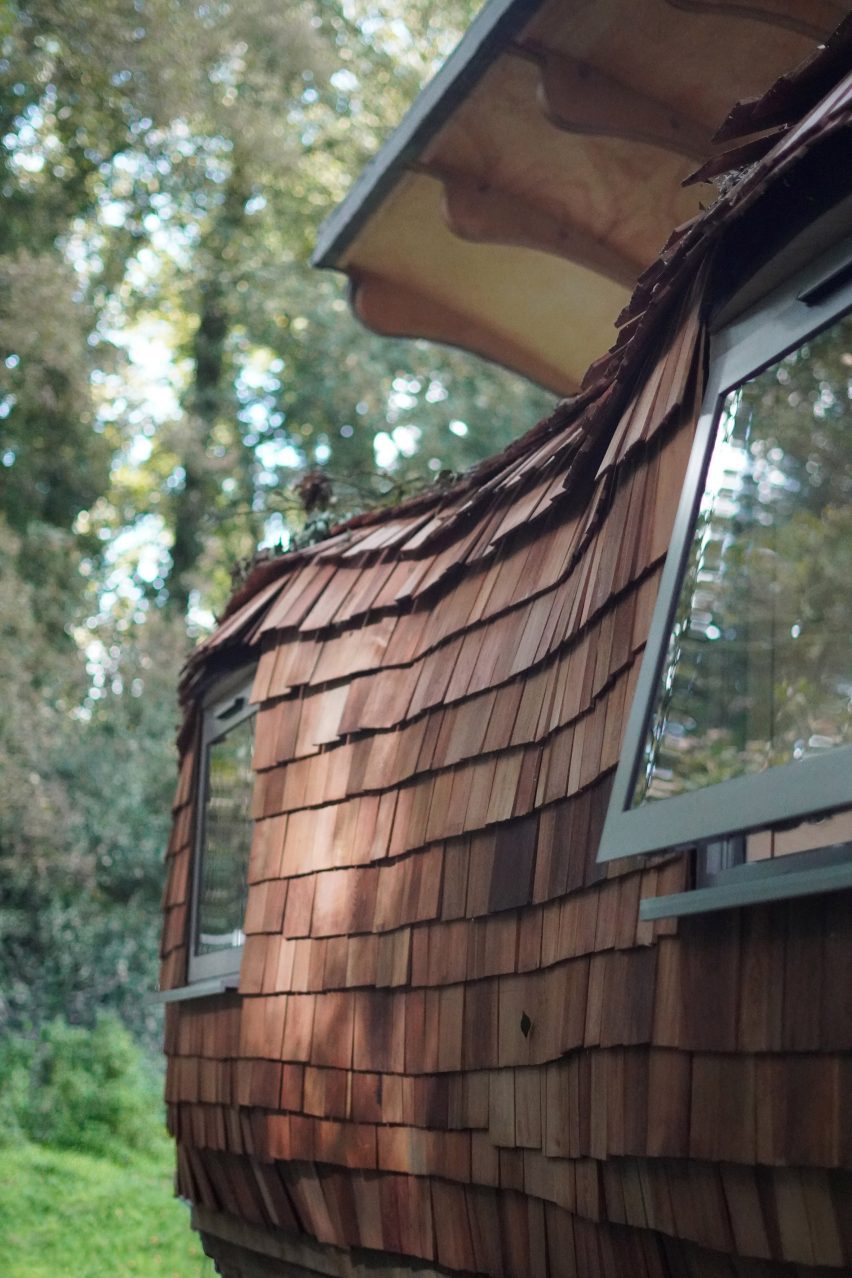
"The idea behind the Monocoque Cabin was inspired by the construction techniques used in the aerospace and automotive industries, which are renowned for their efficient material utilization," Markos told Dezeen.
"Drawing inspiration from the monocoque design of the world war two de Havilland Mosquito fighter planes, which stand out as prime examples of monocoque construction, the Monocoque Cabin seeks to bring this level of ingenuity and efficiency to architecture and domestic spaces."
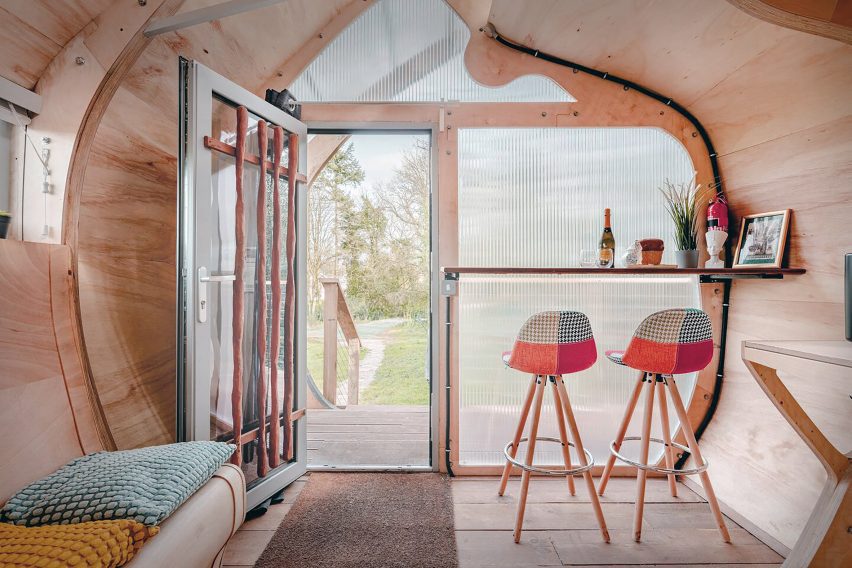
Measuring 3.3-metres-wide, 3.5-metres-tall and nine-metres-long, the cabin's structure is made up of a structural timber rib built from birch plywood. This was then encased by an exterior shell clad with decorative cedar shingles.
Raised external decking, accessed via stainless steel steps, wraps around the cabin's front and edge to provide outdoor space overlooking the neighbouring woodland.
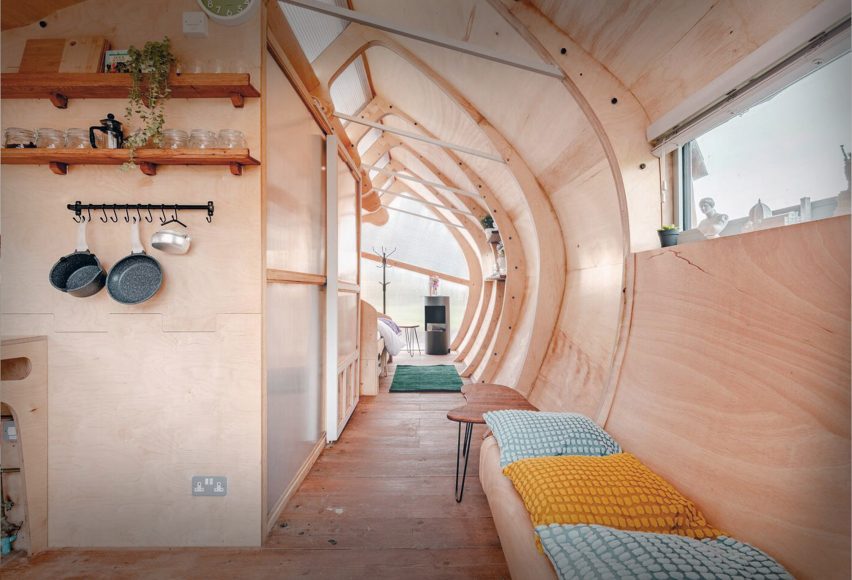
The cabin was constructed as a self-build project undertaken by Markos, along with help from prefabrication specialists at BlokBuild and Price & Myers.
Its careful detailing includes a hand-carved ornament and door handle made from walnut that is fixed to the aluminium door frame.
Additionally, a wind turbine and solar panels are installed on the site to provide energy for the off-grid structure.
Inside, the cabin houses a sequence of compact spaces connected by a corridor, opening up to a living and kitchen space equipped with a wood-burning stove, followed by a bathroom and bedroom.
The cabin's structural timber frame is punctured with translucent polycarbonate openings that draw daylight into the interior, which is lined with timber flooring and furnished with wooden furniture throughout.
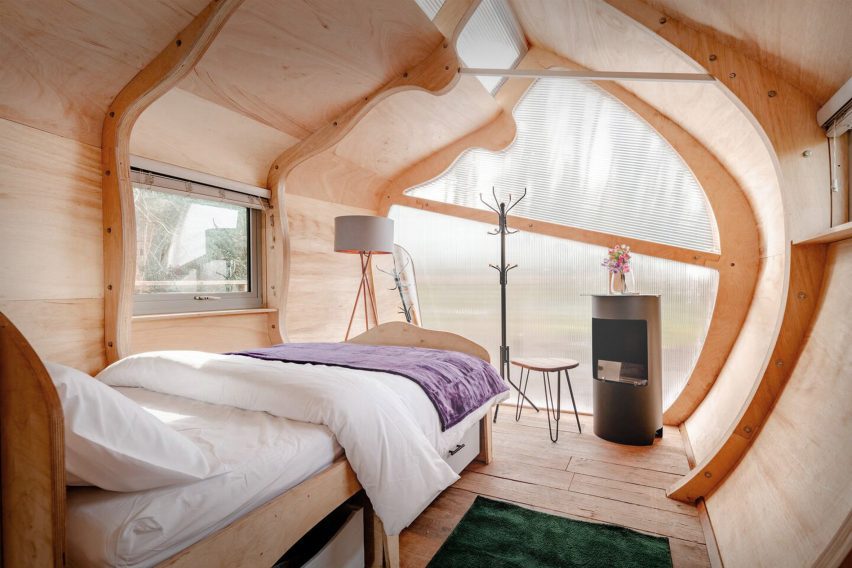
"Monocoque systems are unique because they distribute loads across the external skin of the structure, resulting in a design that is simultaneously rigid, strong, and lightweight, akin to the shell of an egg," Markos said.
"The choice of timber materials for the cabin not only pays homage to these historical designs but also ensures the building harmonizes with its rural surroundings," he continued.
"Over time, these materials naturally age and grey, enhancing the structure's beauty and blending it further with the landscape, much like the enduring designs found in aerospace and automotive constructions that are designed to last and evolve over time."
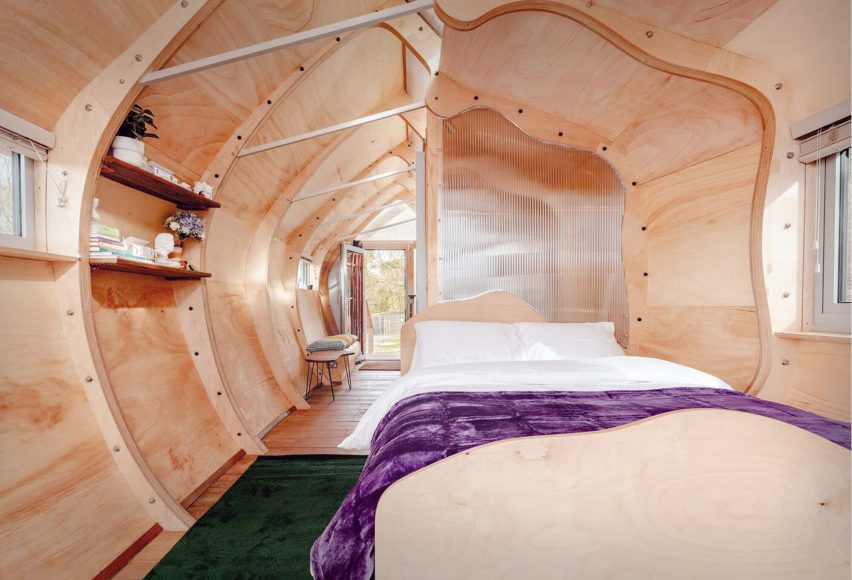
Markos developed the project following funding from rental website Airbnb after winning its global competition for unique accommodations, and has since founded his architectural practice Markos Design Workshop.
Following the completion of the first Monocoque Cabin, Markos intends to replicate the project in different locations – making improvements to advance the design and offering bespoke internal layouts that can be tailored to a client's needs.
Other recently completed cabins include a cabin in Arizona clad with Corten steel and a beachside cabin with a slanted roof in Canada.
The photography is by Peter Markos and Efe Onikinci.
Project credits:
Architect: Peter Markos
Key Subcontractor/ Prefabricator: BlokBuild
Structural Engineers: Price & Myers
Carpenters: Stuart Beagle